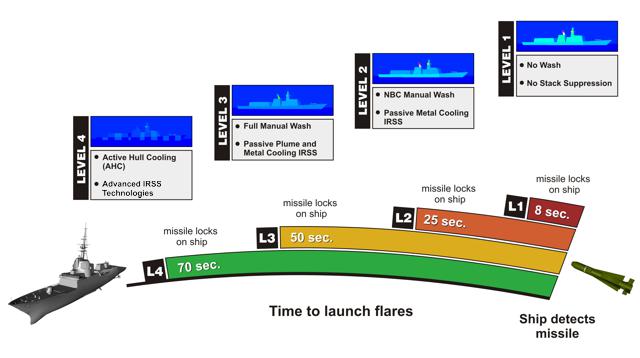The following is an IR supression system for the ROK Aegis type ships, and others. Made by Davis, I believe a Canadian company, the report is from 2007.
http://www.davis-eng.com/docs/newsletter13.pdf
This is their main page, which showcases air and Ship IR suppression systems.

Active Hull Cooling: http://www.davis-eng.com/ahc.html
Engine Suppression: http://www.davis-eng.com/exhaust_suppression.html
This was a Davis presentation showing IR suppression, the image of the Ship in a thermal imager's seeker while shooting off Flares was interesting.
This report: http://www.davis-eng.com/docs/papers/irss_paper.pdf
Illustrates how some of these different systems function, there's UK,Canadian and US IR ship suppression systems showcased.
The ability of each device to cool the average plume
temperature varies significantly amongst the four. The
objective of the UK cheesegrater is to cool metal not the
plume. For this reason the UK device adds little mass flow
of cooling air to cool the plume. It should be noted that the
cheesgrater requires fans for it to operate and if these fans
are turned off, hot gases may enter the funnel spaces. The
US eductor-BLISS entrains cooling air in its mixing tube
and diffuser section, for both plume and metal cooling. In
a similar way the DAVIS (Canada) eductor/diffuser and
DRES-ball both entrain cooling air for metal and plume
cooling. It is believed that the more efficient diffuser section
in the eductor/diffuser and DRES-Ball results in superior
plume cooling. The DAVIS devices have been shown to
achieve average plume temperatures of 200-250(C. The
DRES-ball has the added advantage of full optical blockage,
providing overhead protection as well as sea-skimming.
I believe the US Aegis ships use the Eductor-BLISS system.






